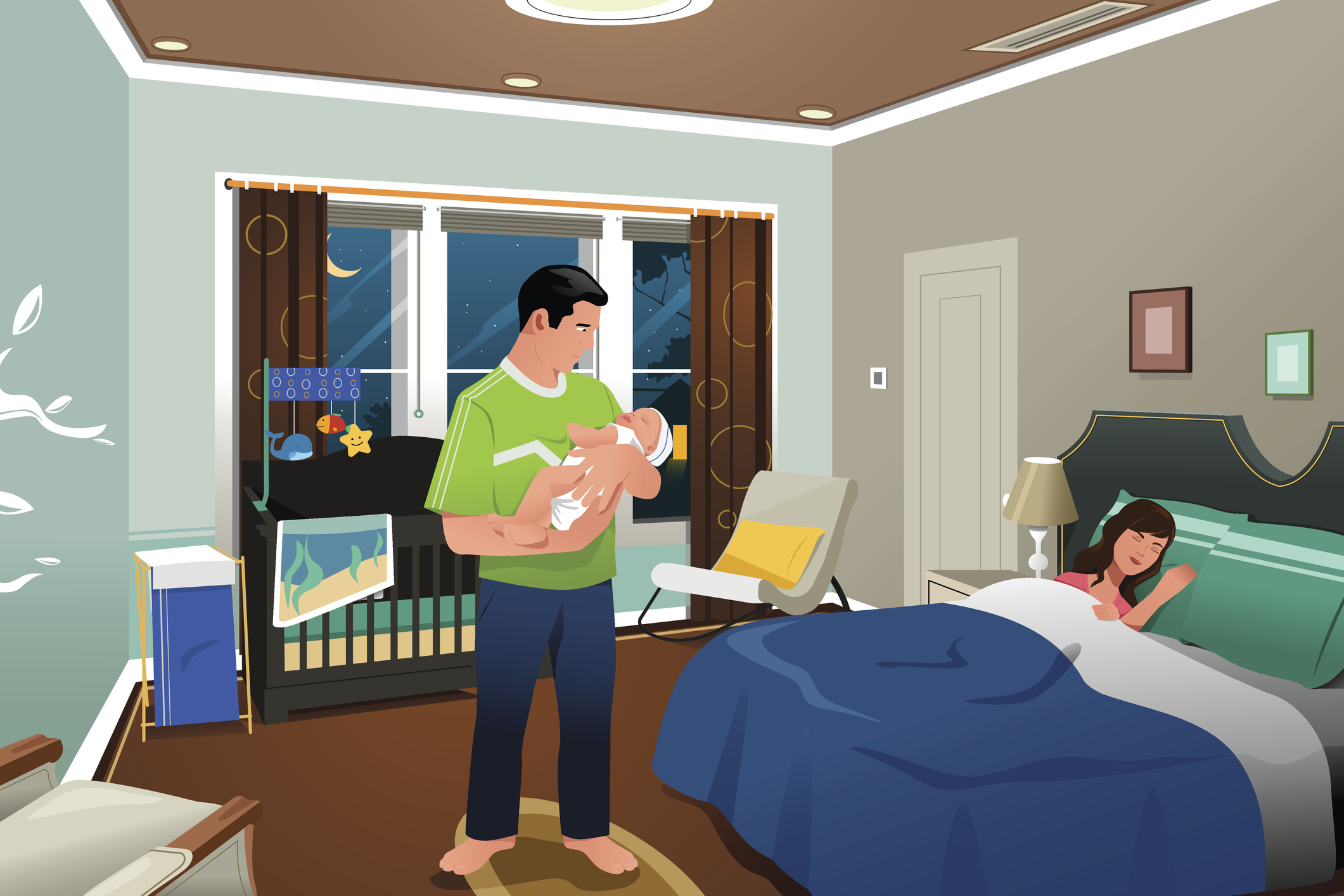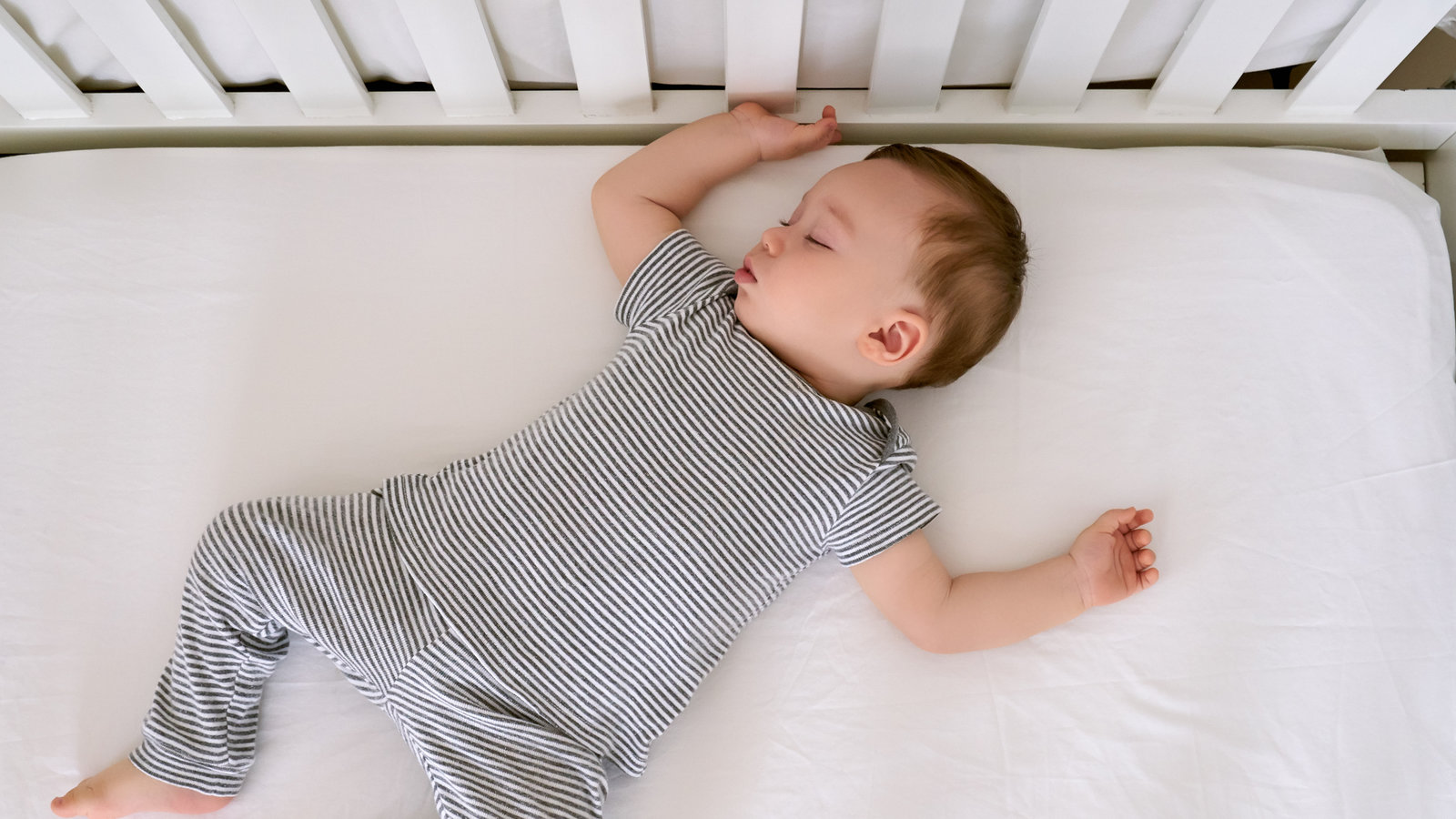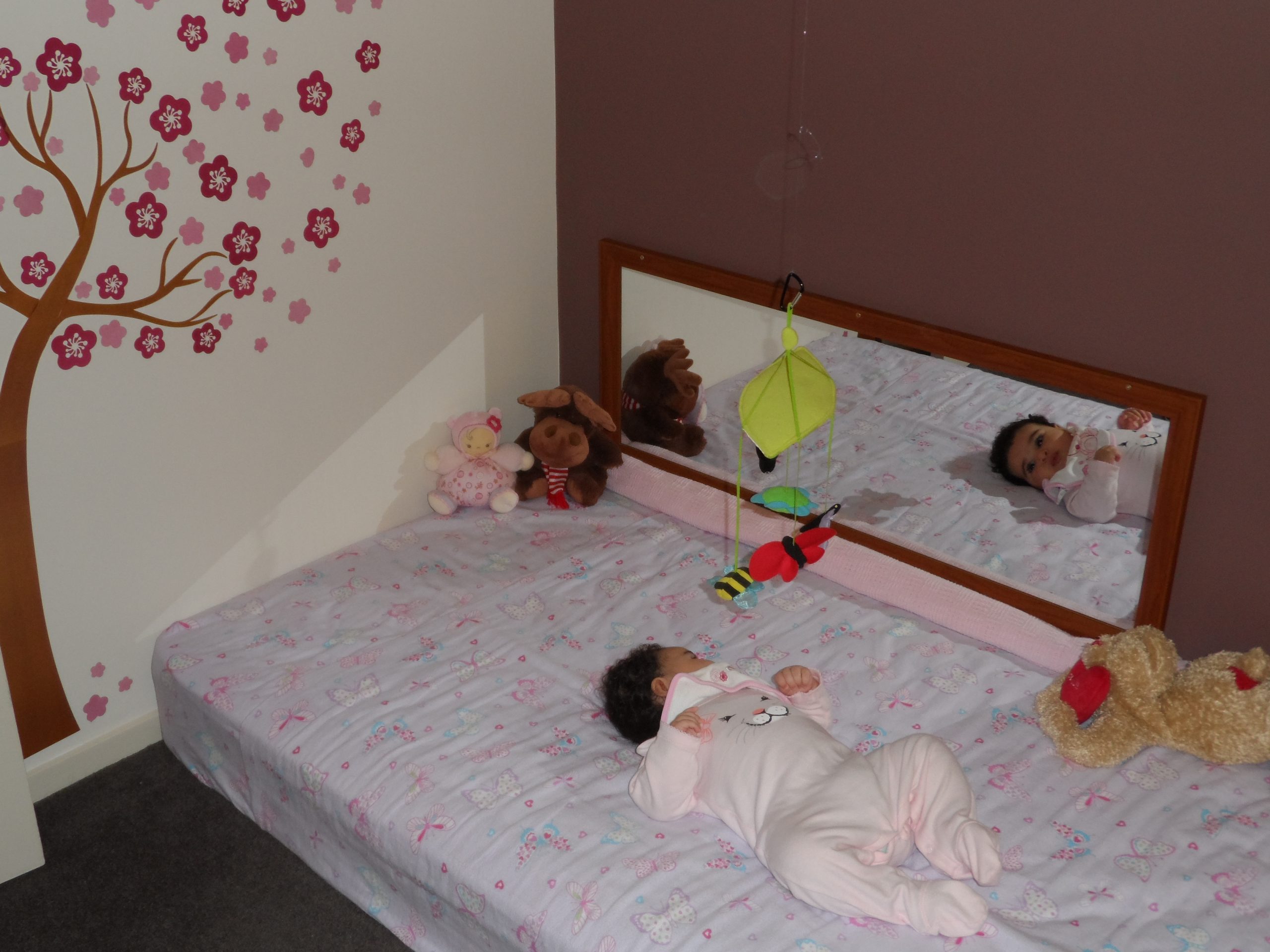Moving Your Baby To Their Own Room

If your baby doesn’t sleep well, he or she may overeat. I know because I was there! To save you from trolling the internet and creating more sleep confusion than when you started, I created the Little Slip Stars e-course – Everything You Need to Know About Baby Sleep
Ten, with easily digestible modules, my knowledge and experience to help you nail nails, grow fast, and ban everything in between, this course is perfect for parents who want the best, evidence-based baby sleep information on hand.
Getting your baby home to sleep is a big milestone. My top tips to make this transition as stress-free as possible – for you and your child!
When the father is taken to his own room
Historically, parents have been advised to keep their baby in the same bedroom for the first 6 months. The rationale behind this is that sharing houses seems to protect against sudden infant death syndrome (SIDS). In most cases it is not known exactly why this has an effect. However, recently the American Academy of Pediatrics recommended that infants be divided for at least the first 6 months, but ideally the entire first year, for maximum protective benefit. Parents have to do what is right for their family, but no one should feel pressured to do something that is unwilling to move the child because of the 6 month mark – a house outside the first 6 months, too Sharing isn’t a bad thing, but it’s a lasting protective effect. It is noteworthy that approximately 90% of SIDS deaths occur before children reach months of age.
When you bring your dad home to you, they will no longer shut down automatically
Many parents choose to remove their toddler because they assume that waking up frequently at night will disrupt their child’s sleep. All babies, around 4 months old, all humans stay awake at night – this is a simple biological function designed to protect us. It’s almost normal to go somewhere three to five times a night. For many young children, when exposed to these routines and normal pain, they need parental support to get them back to sleep. The child’s move to their own home does not prevent them from needing this help. If a parent is a very noisy snail who can rightly interfere with a little person’s sleep, especially in the second half of the night, then children spend more time in light sleep, but in my experience parents rarely disturb their child’s sleep? – In contrast, babies are generally reassured by the physical proximity of their primary caregivers.
Your baby’s sleeping environment

Usually the best sleeping environment for a place is quiet, calm, and as dark as possible. Bed mobiles can look good, they can be exciting / confusing, especially for young children who are in “everything”. Alarm beds are best (and safest) when they are in open spaces, free of camouflage toys and loose blankets. Crib bumpers should be avoided for safety reasons.
Personally, I’m not a fan of light projectors, as part of a sleep routine they seem to fall asleep a lot. Even if they go into their own house, they cannot be afraid of the dark and so I would start the house as dark as possible.
When parents want to focus on one point, such as: B. storytelling / reading etc, it is important to know that red lightbulbs are less likely to disturb sleep than any other color (amber lightbulbs come second). Artificial light and even rays of light emit “blue” light that inhibits the body’s production of melatonin, a hormone that makes us sleepless. For this reason, I always advise parents that their young children should be away from the screen (screen (TV, tablet, smartphone, etc.) (ideally two) for at least an hour before bedtime. This includes TVs in the background in the same Space like the child.
Once a child is ready to sleep, when it is up to 100 dark, you cannot see the hand in front of your face, ideally we would like it to be at least 8-10 dark. Blackout screens and / or blinds may be required, especially at this time of year. Even if the lights are not dimmed in the evening, they are likely to be turned on very early in the morning, which can contribute to early growth (if a child stays up just before morning). Sometimes parents need to be creative to completely block out the daylight – portable blackout blinds attached to the window with life-saving suction cups.
Although a quiet room promotes the best sleep, many find perfect silence disturbing. Again, it returns to the fetal environment, which is not silent – there is a gradual white tone. When a child moves away from home, they get used to a level of background noise and a movement of complete silence can disturb them.
White sound machines are a relatively inexpensive solution for gradually making low-level measles, which many children find comfortable. The sound of white also mutes any louder or more abrupt noise (remember to throw something on the bathroom floor next to the kid’s room!). If you want to hear the sound of the house and / or the sound of birds, you can take a nap before bed.
It’s worth noting that I don’t advise parents to invest in any of the growing white noise devices – while this can be great, a simple white shoe machine or even an app that runs regularly on the iPad will work all night. Remember, if you are using an iPad it must be held under your mouth to prevent blue light from spreading in the nursery!
This can be a good point to introduce comfort on age-appropriate nights. One cannot comfort oneself soon and ignore it for a good time, but it is worth persevering as a question usually arises as to where a child should go and then be protected from a “sleeping friend”.
Don’t guess the worst

Most parents are scared of bedroom rice! But the little ones often get along well with it. When a child is young, their parents are their greatest constant, and when we are around, the changes in the environment often do not meet our expectations. I always advise parents to be ready to give their child extra security and support, but not to automatically guess what it will take. For example, if you usually keep your little one awake and he is happily sleeping in the room without you, the starting point should be to do the same in the new room.
If your child tells you that they are not sure about their new surroundings, sit down next to their bed with calming words, touch, and presence and let them know that they are safe. Try to decrease the touch the following night and possibly walk a little further towards the door. Within a few nights you will be out of the home and your child will happily settle down and fall asleep.
On the other hand, if you’ve already fed your little one or rocked them to sleep before you put them in their own bed, it makes sense for them that the change should be more noticeable for them, as they will eventually wake up in someone else’s bed! It is always worth considering whether the baby’s existing sleeping area can be moved to his own room – this will reduce the number of changes that occur at the same time.
Another option (which will give better results in the long run) is to work on how to fall asleep before moving your baby. If a child is happy, content and confident at the start of the night, don’t be surprised if they find themselves in a new bed!
Start with Friday
I often hear parents leave their little ones in their new home for a week or two and move around at night. The time to “get used to” the new room is much more logical, but it is usually more difficult for younger people to take risks than it is for a good night’s sleep. Whenever I plan to sleep with a family we always start before bed, and although it doesn’t always seem like it, it is actually the easiest time for a baby to fall asleep. Younger people are heavier because they are much lighter than their body clock and environmental factors. So I’m going to move to a new house and bedroom and take a nap there instead of taking a nap the next day.
Invest in a video monitor
You don’t have to buy the fanciest version (and you usually have to trade secondhand), but video monitors can be incredibly effective. Children move around a lot, but we don’t always need them to intervene. Some people make a noise level during the transition through the sleep cycle. When your monitor can only listen, checking your child’s vision is very tempting – this is a common parenting instinct! But often it can annoy the little guy who is repositioning himself. With the help of a video monitor you can have “eyes” and see whether your child needs to help you in any way or whether they are just feeling well and can go back to sleep.
A place for fountains
I am often asked if they should put something in their bed when they wake up to play and if they should learn to associate the place with fun. This is not personally recommended. Of course, we want someone to feel happy and safe in their sleeping place. We’d also like him to associate this with sleep!
Sure first (and last!)
Although the incidence of SIDs has decreased sharply after S months, parents should follow safe sleep guidelines. I’m not going to rehearse them here because most parents know what they are, but the Lully Trust website is a great source for an update.
Babies put into their own room at six months ‘sleep longer’

“Babies sleep better in their own home for six months and are less at risk of obesity, sleep patterns and restlessness,” reported The Sun.
It is based on a US survey of 230 mother-child couples and children who share sleep types.
Despite the headlines, the study did not look at children’s persistent sleep patterns or the risk of obesity.
Studies have shown that babies who slept independently (not in the same room as their mothers) slept more in the short and long term after 4 or 4 to 9 months. At nine months of age, the “single sleepers” slept about 40 minutes longer than the “room dividers”.
Concerning, the researchers also found a link between shared flats and unsafe sleeping habits that have been linked to sudden infant death syndrome (SIDS), such as sudden use of blankets and pillows or parents putting a baby to bed. However, no case against SIDS was recorded.
The results will appear in contrast to recent US guidelines that offer home sharing for the first year. This is different from NHS guidelines that recommend keeping your baby at home in a separate bed for the first six months.
Where did the story come from?
The study was conducted by researchers from Penn State College of Medicine, the University of Connecticut, the University of Buffalo, and the University of Georgia in the United States.
The study was funded by grants from a variety of U.S. organizations, including Penn State College of Medicine, Penn State Children’s Hospital’s Children’s Wonder Network, the U.S. Department of Agriculture, Penn State Clinical and Translator Science Institute, and the National Institutes of Health.
The quality of coverage in the UK media was rapid. As mentioned earlier, The Sun falsely stated that researchers were studying the risk of obesity. Other studies have found a similarity between insomnia and obesity later in life, but this study did not examine them.
Mail Online also claims that after the age of six months, children left home to “lose the ability to calm down”. This study is not to be investigated or reported.
What kind of research was that?
This was a secondary analysis of data collected from randomized controlled trials that compared parental interventions to a control group of mothers and their children.
The researchers traveled specifically to find connections between room sharing (but not bed sharing) and children’s sleep patterns. They also wanted to look for links between independent sleep and the risk of sudden infant death syndrome (SIDS).
Analyzing secondary data using pre-existing data is an effective way to conduct a study. However, since the study has already been completed, the researchers were only able to analyze and reach conclusions from the limited data they have.
What is involved in the research?

The researchers recruited 230 mother-child pairs from the United States who participated in the Interventional Nursery Start Infants Growing on Healthy Trajectories (Insight) and examined the relationship between independent sleep and sleep outcomes.
- The children were first born and of healthy weight from mothers who were English and over 20 years old. Parents who reported sharing beds with their children were excluded.
- Children aged 3 to 4 weeks and then again at 4, 6, and 9 months are attended by nurses.
- The Infant Slip Short Questions and Answers were used to assess sleep at 4 and 9 months of age, with a shorter version at 12 and 30 months of age.
- This survey rates the baby’s sleeping position, pre-bed activities, and sleep patterns. Sleep time is divided into night time (7 p.m. to 7 p.m.) and daytime (7 a.m. to 7 a.m.).
- After 4 and 9 months, additional questions were asked about sleep, including waking up at night, feeding and length of night, the sleeping baby’s behavior and the environment, and the parents’ reaction to waking up at night.
Background characteristics are the race / ethnicity of the children, parenting, annual income and marital status. They also rated maternity age, pre-pregnancy weight, weight gain during pregnancy, whether the baby was sustained, and the baby’s measurements.
What were the first results?
The results showed that in 230 children:
- 62% were “early independent sleepers,” which means they slept independently for 4 months without sharing a home.
2 %% were “later independent sleepers,” which means they slept independently for 4-9 months.
11% shared rooms in 9 months - After 4 months, the individual sleepers initially averaged 469 ± 189 minutes, the longest “sleep extension” compared to 423 ± 158 minutes for the shared use of houses with long-term uninterrupted sleep.
- Individual sleepers also had less night feeding than room dividers after 4 months (1.1 vs. 1.4).
- Independent sleepers at the beginning of 9 months slept 626 nights 67 minutes a night later, 601 ± 73 minutes later for independent sleep, and 587 ± 83 minutes for those who share the house 9 months more. Early single sleepers slept longer at a time than late single sleepers or room dividers.
- Within 30 months, both early and later single sleepers slept an average of 45 minutes longer at night than those who shared a room for 9 months (614 ± 51 versus 617 ± 70 versus 569 ± 79).
- After 4 months, infants sharing a room had a large inequality in using unacceptable items such as blankets, pillows, or positioners (adjusted odd ratio [AOR] 2.04, 95% confidence interval [CI] 1.17 to 3.57 ) on the sleeping surface.
- In both 4 and 9 months, the parents who shared the room were discriminated four times more than putting their baby to bed overnight (AOR 4.24, 95% CI 1.64 to 10.95) .
House sharing referred to ethnic groups such as race / ethnicity, low income and education, unmarried and / or non-coexisting with a partner, with fewer bedrooms in the house and with family members or other people in the house.
How did the researchers explain the results?
The researchers concluded that “sharing homes between the ages of 4 and 9 months is associated with shorter and longer periods of time, less sleep integration, and fewer sleep-related sleep patterns associated with sleep-related deaths”.
Conclusion
The study shows a short- and long-term relationship between the division of the infant and parental home between 4 and 9 months and infants with low sleep. There was also a link between the layout of the house and unsafe habits such as leaving blankets in bed.
However, because the study has some limitations, the results of this study must be treated with caution:
Research doesn’t show that keeping children in their own home helps them sleep longer. Some parents of children may not sleep very well and decide to leave their child at home.
The data collected was reported by the parents themselves. How long your children slept can have biased consequences that lead to errors in their memories.
The sample was relatively small in order to draw specific comparative results. This included most relatively high-income white mothers who were married or had a partner and had at least two bedrooms. This may mean that the results are less generalizable than in other populations. The study was also conducted in the US, so it may not be as relevant as it is in the UK.
Who is the main supervisor and how many supervisors are involved in the practice during sleep? Other factors were not considered and the results may have been biased.
The researchers discuss previous studies that have linked children’s sleeping habits to the risk of sudden infant death syndrome (SIDS). However, no case of SIDS was reported in this study. However, research shows that sharing a house increases the risk of seeds.
